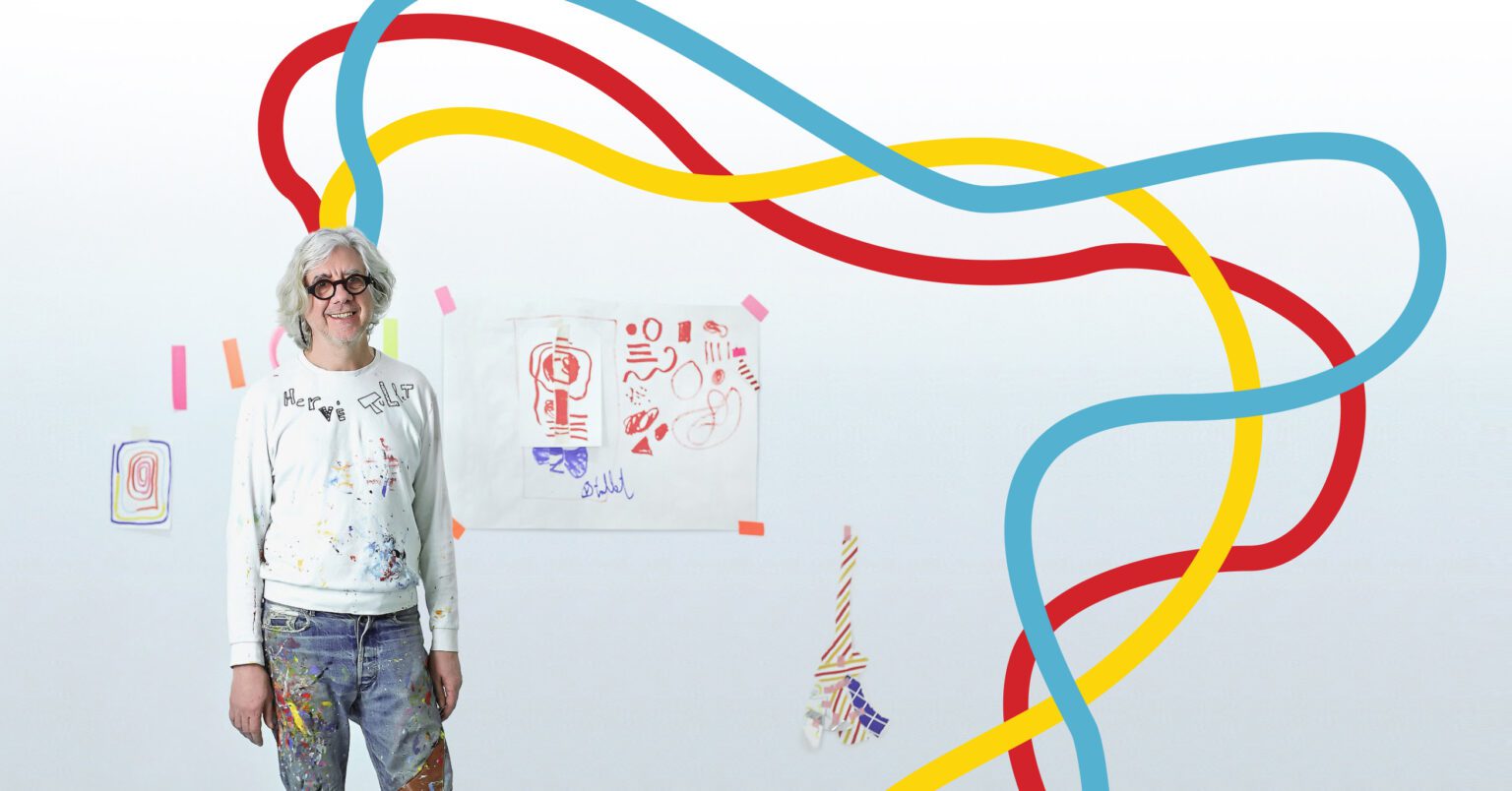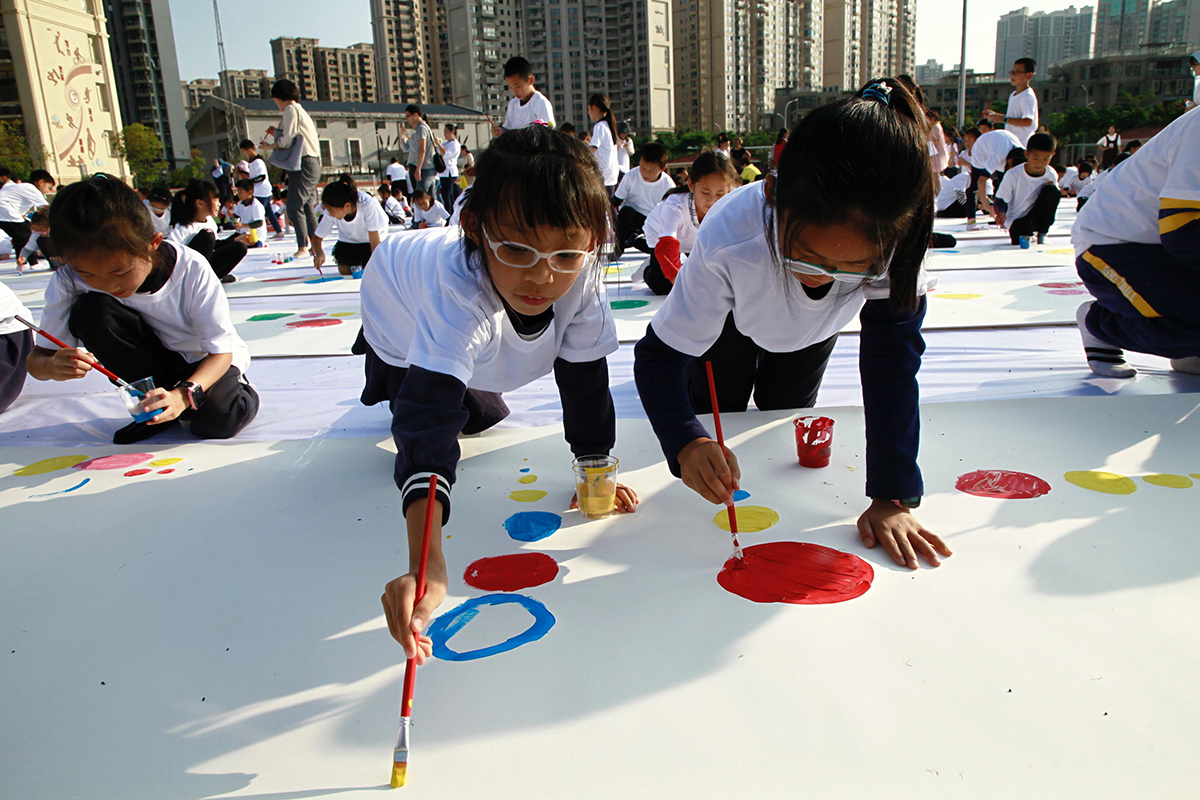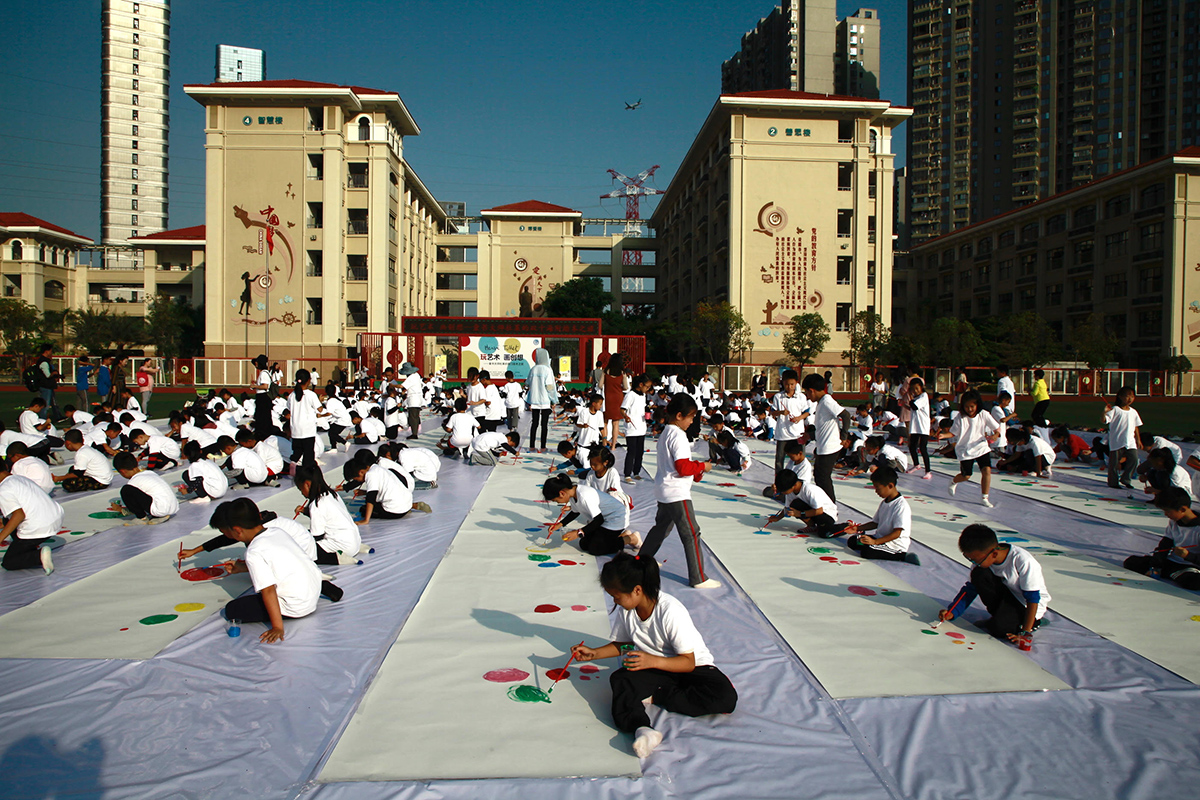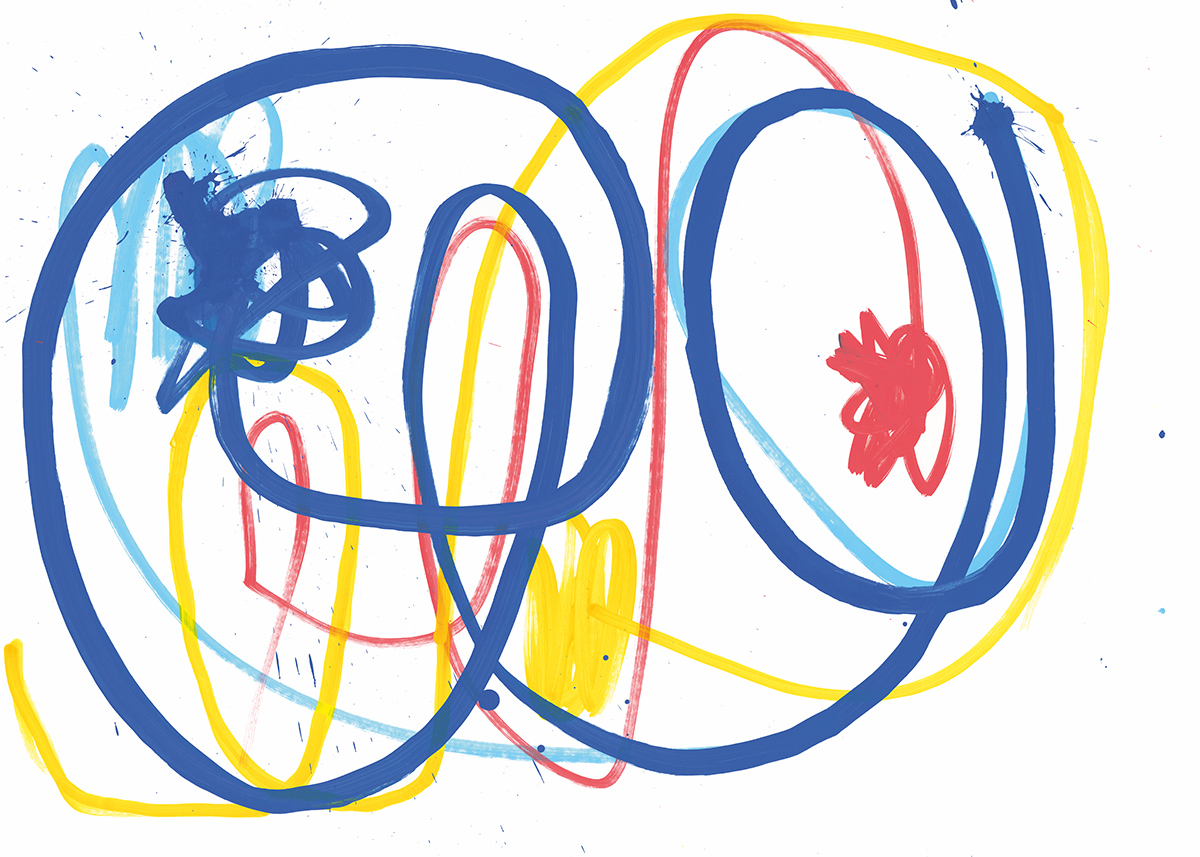

Before you read any further, take some paper and a pen, any pen, or a pencil, or even a paint brush. Colours are best.
Now, play.
Pardon?
Just draw something.
But I can’t draw!
Splodge. Doodle.
Twist a line across the page.
Make an outline of your hand.
What colour should it be?
Anything you like.
Cut it up,
stick it down,
but shuffled like
a random pack of cards.
Explore, invent, have fun.
What have you got? Art.
Art?
“Bien sûr!”
to use the French.
Hervé Tullet’s art is based on movement, gesture, paint, and stains. He has the mantra “dots, lines, stain and scribbles,” as these are a vocabulary that a child can understand. Tullet produces art for children, pre-school children. He has said that a baby is a like a fine artist with her gurgles and giggles and gestures and appreciations. He has children in rapt attention as he reads to them, showing the simple pictures in his books of vivid colours and making sounds along the way. “Blop!”, “Oh!”, “Oooh”, and things like that. They turn the pages and touch the pictures or roll a dice. One of my favourites is making a monster. “How many eyes does it have?” Roll the dice. “Five.” And so on.
When he works with groups of children there can be a class, a group in a library, or 50+ in a hall or outside with long strips of paper, paint, crayons, marker pens and the artist who guides them like a conductor, though the lines and shapes and splashes of colour are more akin to the composition of a jazz player in his mind. There is a video clip of him with a large group of children on a playing field in Xiamen in China as they run this way and that creating. One of his joys is to take this creativity to difficult areas, such as schools, projects and hospitals, and to see a smile on a face. He told me that the more he discovers that his work is useful and is working for libraries and teachers, the more he delights in trying to feed their creativity. He describes his work as the art of play.


Tullet has published more than eighty books, and still counting. Many are short, sometimes board books on a simple theme such as hands or play or mixing colours, though he has produced longer books which collect resources and ideas and explain a little more about his style and vision. His early work, Press Here, is perhaps a good place to start for those who are new to him. It takes you into its few pages, pressing, touching, shaking the book. The book is important as it is visual and tactile. He wants to get children interested in the look and feel of a book. For the young children, the reading experience is more than the physical book, though. It is an interaction and a sharing between reader and child. When he has finished a book, it is not finished, for the reader becomes part of it in their experience. It is completed by anyone reading it in their own way. He says, “An author is part of a group of people.” Tullet launched L’Expo Ideale to allow people to make their own Tullet exhibition in a gallery, a hall, a bedroom or even a shoe box. Groups joined in online, and it is an ongoing project in so far as a book of resources and ideas is available. This reminds me of the term “intertextuality” as coined by the semiologist, philosopher and psychoanalyst, Julia Kristeva. Intertextuality is the influence of different sources and ideas upon one another, so that there are, in fact, no isolated texts. Everything is part of a weave of words and thoughts and expressions and no writing, no story, no book, just falls out of the sky. Furthermore, the text continues with the readers. Their narrative is part of the book. This can be how the reader is affected by the book, but it is more than that. The reader lives a life, and the book takes part in it. One weave, one continuous text. In that sense, a book is never finished. The group activities where children run around painting and drawing on communal paper sheets do not produce what we would call a book, exactly, but Tullet is keen to stress that they are all part of the work for when people are moving from one place to another the drawing does not belong to them.

He hasn’t always made art in this way. Until he was about thirty-five, he worked as an advertising director, but this was not really who he wanted to be. Since beginning his exhibitions, workshops, and books, he has had a studio at home in Paris, then in Harlem, and back in Paris again. Why does he do it? It is play. It is joyful. It is fun and it is sharing. It is not that he wants to turn young children into artists but to look at the world around them and the need for creativity, to make amazing and useful things, as he puts it. Children want to explore and invent and play. Play is important, for the concept of a game drives his art as his fascination for the game and to make people want to play. The game needs surprise (“my desire is always to surprise”) and each turning of the page can provide this. This opens the imagination, and, as he states, “Art is a way to help people to see, to look.” There is a beauty in his work, not only with its fun and primary colours, but in a joy in life, a vitality, and a vivacity. There is beauty in the value of love, in the care for the child and in helping to open their eyes to see in fresh ways things that are always there but open up anew.
It would be wrong to limit Tullet’s work to children, though. “I don’t speak to children. I speak to everybody. I speak to the eyes.” To “speak to the eyes” is to Wonder, to Feel, to Touch, words of my own that I have chosen deliberately as they segue into their use in my study of spirituality as a general, human quality (and not just the religious). Tullet’s work comes alive for me in that context, and also as I am a creative thinker and educationalist. Even an atheist has a spirituality in the sense that I am using here, and whatever we make of the world, there is beauty, there is love, there is play and therefore there can be Art. I can’t help to conclude by dipping my proverbial brush into a dab of my own faith, though. In the Gospels Jesus called little children to him, blessed them, told his disciples to become like them, and told them to be born anew within. Furthermore, I can’t help thinking that the resurrection story itself is a trip into movement, opening and surprise (cf. 1 Cor 2:9: “the things that no eye has seen and no ear has heard”). Resurrection is a form of surprise at turning the page. Faith is not childish, but it must never lose sight of the child. Long may Tullet make dots, lines, stain and scribbles. Play on.
Kevin O’Donnell is an author, a priest of the diocese of Arundel and Brighton, and an auxiliary chaplain at the Basilica of Notre Dame de Pontmain in France.
Hervé Tullet’s books are translated into English by Chronicle Books. A good place to start is with Press Here, and the overview of his work in The Art of Play. Examples of books, artwork and video clips can be found on his website, including his activity in Xiamen.
We’re changing how you can read and share TBP online. Stay tuned…